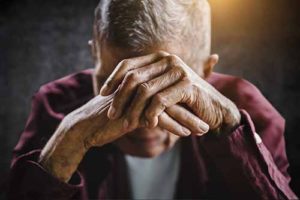
Elder care in America should provide the very best support and treatment for your loved one. Unfortunately, that is not always the case due to physical abuse and neglect. You may think of physical abuse and neglect as violent actions performed against the elderly. However, physical abuse and neglect can occur in many different ways in addition to violent actions.
Allow us to highlight different ways physical abuse and neglect may occur in long-term care facilities:
1. Lack of Medication & Sustenance Administration in Long-Term Care Facilities
Your loved one may need medication prescribed by their primary care physician to aid their health and keep them comfortable, and every person needs food and water to stay alive. If the caregivers at the long-term care facility do not administer medication as prescribed by the patient’s physician, or provide meals and hydration, the patient’s health can dwindle.
It is not always apparent when medication and regularly scheduled meals and drinks are missed. The side effects of this lack of care may take weeks to surface. It is not unreasonable for a family member to think that weight loss or mental fogginess is a natural part of a long-term care facility stay. Always ask the caregiver on duty about any concerns you have regarding your loved one.
2. Poor Care for Bed-Ridden Individuals in Extended Care Facilities
Elders who are confined to a bed due to their health condition or illness must be turned several times a day to prevent bed sores from forming on their ears, back, buttocks, legs, and heels. Bed sores are extremely painful and can quickly become large, infected, and lead to death. There are specially designed mattresses for people who suffer from bedsores. If a patient is given proper care, a bedsore should never arise.
3. Failure to Help Those with Mobility Issues in Nursing Homes
It is not only bed-ridden individuals who need help with mobility and performing normal, everyday activities such as going to the bathroom, showering, and getting dressed. If caregivers fail to help those with mobility issues, serious issues like infections can occur. It is vital that your elderly parent receives help with basic needs.
4. Misuse of Restraints in Skilled Nursing Facilities
There are several reasons why a restraint might be used in a skilled nursing facility including to prevent falls, protect medical equipment (i.e., catheter or IV line), or inhibit the elder from injuring himself or herself. Restraints may protect the resident, but it must be carefully used. Leaving a restraint on for too long or using it the wrong way can physically harm the elderly.
Clark, Smith & Sizemore is your compassionate nursing home abuse law firm. Call us: 478-254-5040
Stay tuned for our six-part series on elder abuse in a skilled nursing facility, also called nursing home abuse:
- FAQs – Abuse in a Skilled Nursing Facility
- Types of Physical Abuse & Neglect in Long-Term Care Facilities
- Risk Factors that May Contribute to Nursing Home Abuse
- What to do if You Suspect Elder Abuse in Long-Term Care Facilities
- How to Report Abuse in a Skilled Nursing Facility
- When is a Nursing Home Abuse Lawsuit Necessary?
